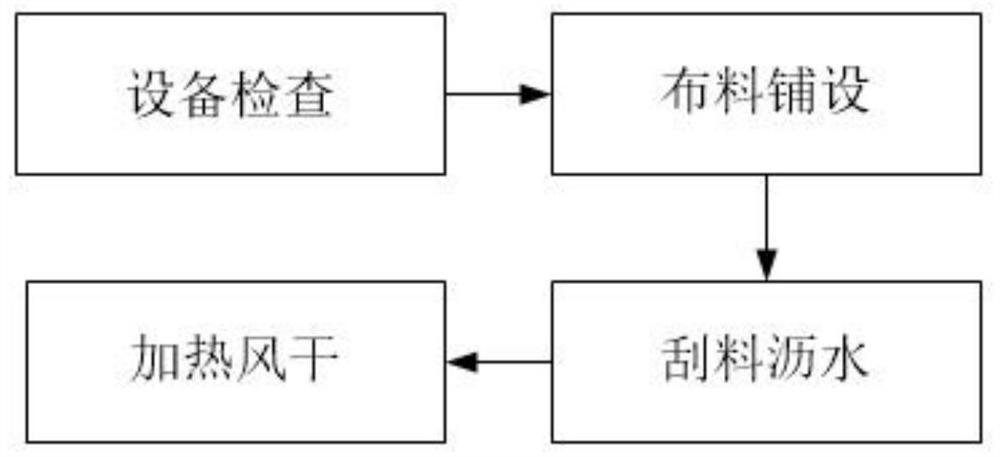Dyeing technology for non-woven fabric production
A non-woven fabric and process technology, applied in the field of non-woven fabric production and dyeing process, can solve the problems of non-woven fabric damage, non-woven fabric dewatering, low efficiency, etc., and achieve the effect of close contact and favorable water absorption effect
- Summary
- Abstract
- Description
- Claims
- Application Information
AI Technical Summary
Problems solved by technology
Method used
Image
Examples
Embodiment Construction
[0036] Embodiments of the present invention will be described below with reference to the drawings. In the process, in order to ensure the clarity and convenience of illustration, we may exaggerate the width of the lines or the size of the constituent elements in the diagram.
[0037] In addition, the following terms are defined based on the functions in the present invention, and may be different according to the user's or operator's intention or practice. Therefore, these terms are defined based on the entire content of this specification.
[0038] Such as Figure 1 to Figure 8As shown, a non-woven fabric production and dyeing process uses non-woven fabric production and dyeing equipment. The equipment includes a mounting plate 1, a draining device 2, and a drying device 3. The specific method when using the above-mentioned non-woven fabric production and dyeing equipment is as follows :
[0039] S1. Equipment inspection: check the operation of the equipment before starti...
PUM
 Login to View More
Login to View More Abstract
Description
Claims
Application Information
 Login to View More
Login to View More - R&D
- Intellectual Property
- Life Sciences
- Materials
- Tech Scout
- Unparalleled Data Quality
- Higher Quality Content
- 60% Fewer Hallucinations
Browse by: Latest US Patents, China's latest patents, Technical Efficacy Thesaurus, Application Domain, Technology Topic, Popular Technical Reports.
© 2025 PatSnap. All rights reserved.Legal|Privacy policy|Modern Slavery Act Transparency Statement|Sitemap|About US| Contact US: help@patsnap.com



